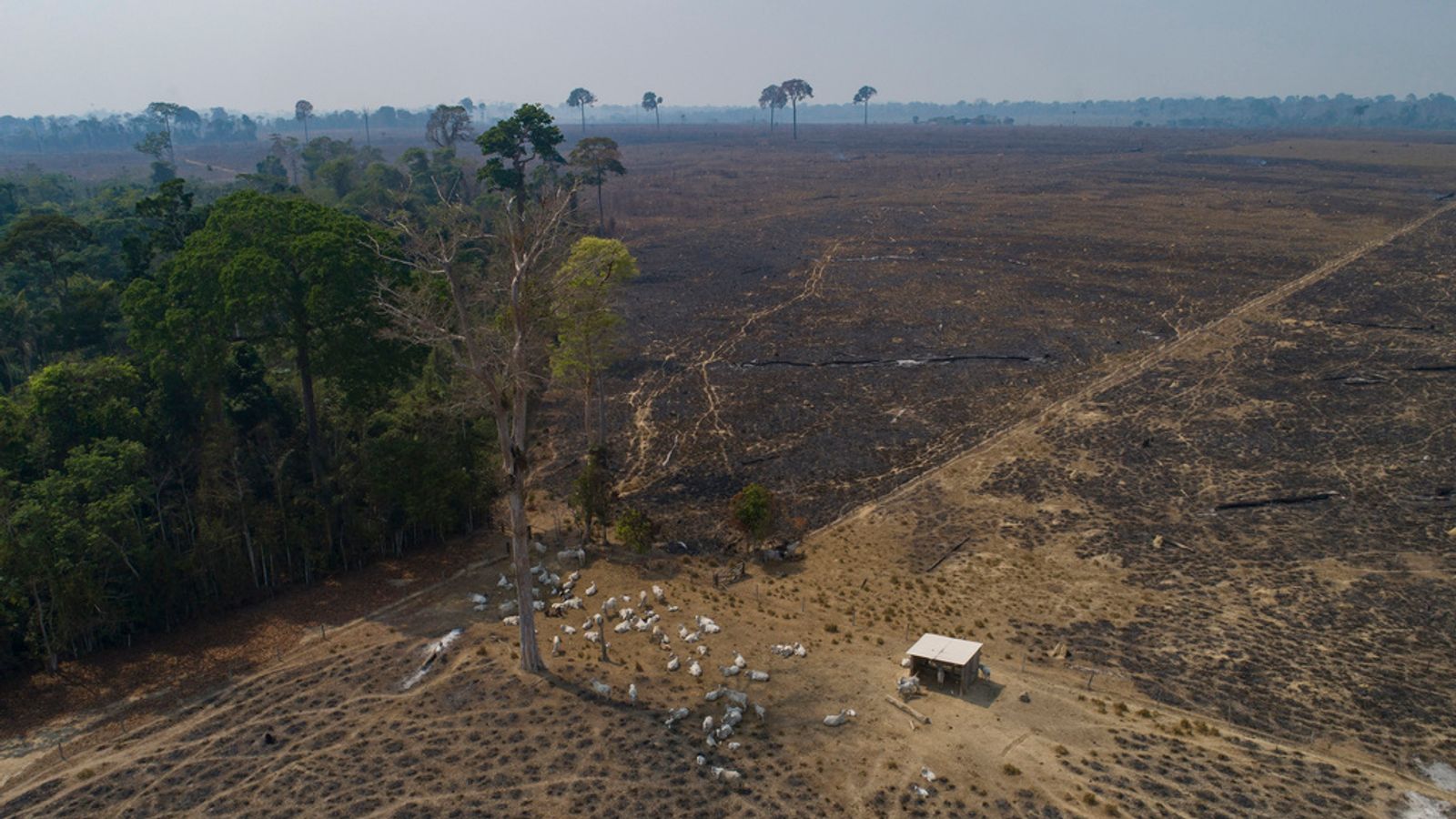Forest destruction in Brazil and Colombia has fallen “dramatically” under new political leaders, according to new research by Global Forest Watch (GFW).
The steep declines “offer a ray of hope for the rest of the world, showing that progress is possible, given the right political will”, said Mikaela Weisse from the World Resources Institute, which runs GFW.
In 2023 forest loss fell by a “remarkable” 36% in Brazil and 49% in Colombia.
This coincided with the new presidencies and policies of Brazil’s Luiz Inácio Lula da Silva and Colombia’s Gustavo Petro, it said.
But their progress was offset by “sharp increases” in countries like Bolivia and Nicaragua, leaving forest loss in 2023 “stubbornly consistent” with recent years.
Please use Chrome browser for a more accessible video player
What does this mean for global deforestation target?
The persistent, permanent destruction of tropical forests leaves the world “definitely not on track” to halt and reverse deforestation in just six years’ time, said Ms Weisse.
The 2030 target was struck with much fanfare at COP26, the climate summit in Glasgow in 2021.
Since then, forest loss rates have hardly changed.
Forest loss can include deliberate deforestation, as well as manmade accidental fires and wildfires.
The main cause globally is agriculture, and 96% of deforestation happens in the tropics.
Tropical forests create ecosystems vital for neighbouring food production, underpin health and help fighting climate change by absorbing carbon dioxide (CO2).
“There is no net zero unless you stop land use change, unless you stop that 20% of CO2 emissions going into the atmosphere,” said Jack Hurd, executive director of the Tropical Forest Alliance.
“And that is also the easiest, cheapest, most feasible thing to do between now and 2030.”
And “we absolutely know how to do it” – as proven by Lula’s previous administration in 2003-2011 and in Indonesia, where forest loss rates plummeted over the last decade under new policies, he said.
Indonesia shows “you can actually stop deforestation and land use change in a legal way that doesn’t undermine the economic productivity of the agriculture sector”, according to Mr Hurd.
Read more:
Why are so many environmental activists being killed in Colombia?
UK’s ‘unsustainable’ consumption putting ‘enormous pressure’ on world’s forests
COP26 deforestation deal misses first deadline just months launch
Please use Chrome browser for a more accessible video player
Amazon ‘tipping point’ warning
GFW’s report cites Lula’s new leadership for “revoking anti-environmental measures, recognising new indigenous territories, and bolstering law enforcement efforts”.
But while the destruction of Brazil’s Amazon forest dropped 39%, rates increased in its lesser protected Cerrado region.
Meanwhile, the Amazon is experiencing its worst drought on record, raising fears it could eventually reach a “tipping point”, beyond which it can no longer support a rainforest and would dry out, in turn further driving climate change.
Stopping deforestation alone isn’t enough to avert a tipping point as long as countries continue to burn fossil fuels that drive climate change, warned Aline Soterroni, an environmental scientist at the University of Oxford.
The world would “not stay in the safe levels of global warming with, terrible consequences, especially for ecosystems” she said.
The problem in Brazil is much forest loss is legal, but needs tackling alongside the illegal deforestation, said Ms Sotteroni, who also creates climate models for the Brazilian government.
Most forest in Brazil is being cleared to make way for either cattle farming or soy production, which is exported to China or Europe to feed livestock.
Please use Chrome browser for a more accessible video player
How deforestation in Colombia is linked to the peace process
The loss of primary forest in Colombia soared in 2016, coinciding with the country’s peace agreement with the Revolutionary Armed Forces of Colombia (FARC).
Large tracts of remote forests previously strictly controlled by the FARC became accessible, and ended up being cleared by other armed groups and land speculators.
In August 2022, Colombia inaugurated its new president, Gustavo Petro Urrego, who has prioritised the environment and set forest conservation as an explicit goal of the discussions.
But the story is very different in poorer Bolivia, where forest loss jumped 27% last year, driven by fires and agriculture, in particular soy, GFW said.
Mikaela Weisse said: “The key underlying thing here is that it is more profitable right now to clear forests than to keep them standing. And so there’s no silver bullet that’s going to magically change that fact.”
But she added various solutions do exist – including financial incentives, strong government policy, anti-deforestation regulation in countries creating the demand, and bolstering local economies in non-timber products.






















